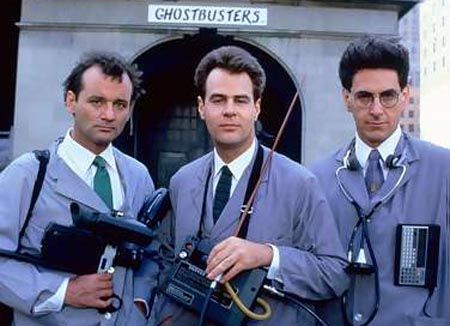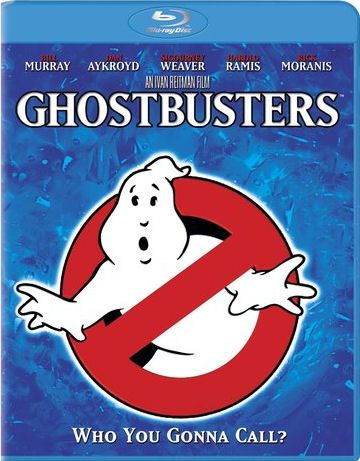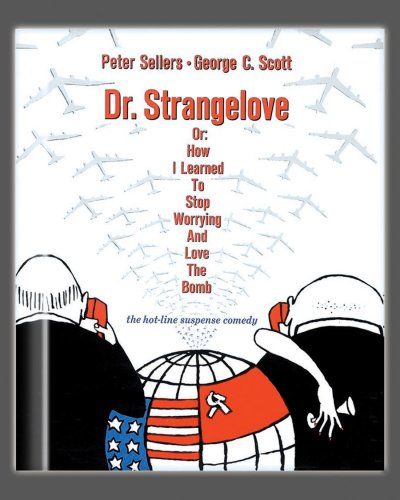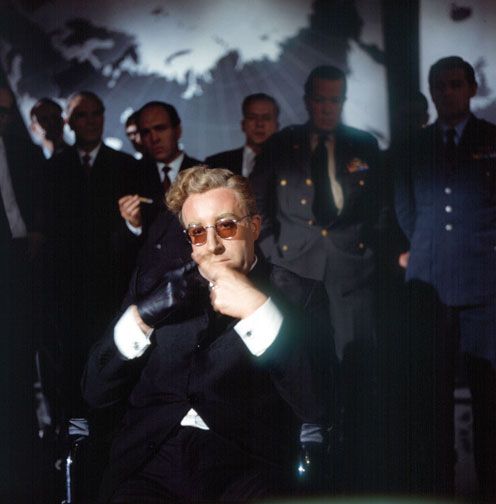Ray Parker Jr. has continued to work. You wouldn't probably know it unless you were a fan. But he put out an album in 2006. At this point, not only is Ray Parker Jr. not afraid of no ghosts, no one is afraid of no ghosts. People may be more afraid of Ray Parker Jr. than ghosts. We like in a post-scared of no ghosts culture. It is hard to know how good busting makes someone feel, though.
Ghostbusters is a bona-fide "classic" now. It's a loosey-goosey movie, it's tightly put together, but it feels free. The set pieces never feel stuck in their boxes, and the comedians seem to bring their own sensibilities to the material. Directed by Ivan Reitman from a script by Harold Ramis and Dan Ayroyd, it moves at a quick clip and balances the boo scares with the jokes successfully. It's one of the film effects driven comedies that works as a comedy first. But it's Bill Murray's movie.
More after the jump:
Murray stars as Dr. Peter Venkman, who along with Dr. Raymond Stanz (Akyroyd) and Dr. Egon Spengler (Harold Ramis) works at Columbia University, but gets fired after having a strong paranormal experience beforehand. Such leads Venkman to lead the charge: They should open a paranormal re-termination business. Though things are slow at first, they get their first client in Dana Barrett (Sigourney Weaver), who experiences Zuhl and Goozer in her fridge. But they get a big call, and suddenly business starts booming, just as they piss off the EPA's rep Walter Peck (William Atherton). Dana gets possessed, as does her neighbor Louis Tully (Rick Moranis). And just as they hire a fourth guy, Winston Zeddmore (Ernie Hudson), all hell breaks loose, literally.
This is one of the prime examples of Bill Murray's comic sensibilities well matched by his supporting players. Though Ramis and Murray had already done a buddy comedy in Stripes, here the threesome is excellent, and so then is the foursome. But the film also has a stellar supporting cast, with Atherton, Moranis, and Annie Potts bringing the funny. These days I really dig on Ramis and his Egon the most. But I think what really brings the film together is the conclusion, when the characters actually become heroes. You buy it. Ghostbusters came out in the summer of 1984 and was one of those great summer movies, the likes of which we haven't seen in a long time. One that is well put together, but a genuine crowd pleaser that lets its leads shine. This is what popcorn entertainment should be.
Sony's transfer of the film has come under fire. The film has never looked that good, and the new transfer is not excellent by any stretch, but the film and the age suggests this is about as good as it's going to look. The film is widescreen (2.35:1) and presented in 5.1 Dolby Digital TrueHD. The film comes with the commentary by Reitman, Ramis, and associate producer Joe Medjuck, the ten deleted scenes (8 min.), three featurettes (35 min.) three multi-angle featurettes (6 min.), and three storyboard comparisons (7 min.) from the previous DVD release, all of which can be viewed whilst watching the film. Then there's Slimer Mode, a PIP track with comments from Reitman, Weaver, Ramis, Ayroyd, Atherton, Hudson, and others on the making of the film, and its success. There's a featurette on the car, which was resurrected and cleaned up (16 min.), a making of for the new video game (11 min.), a still gallery on the car (5 min.), a preview of the video game (2 min.), along with bonus previews.
Dr. Strangelove, now that's a transition. Stanley Kubrick's Dr. Strangelove: Or How I Stopped Worrying and Loved the Bomb is now a film that needs a little context. At the time, our culture had survived the Bay of Pigs invasion, and came close to an all out global nuclear war. Having come off of the black comedy Lolita, Kubrick decided it was time to poke fun at the possibility of the world ended not with a bang, but with a general going nuts because of some woman he slept with.
That General is Jack D. Ripper (Sterling Hayden), and he sets off the plot when he plans the destruction of the Russian empire with his plan. In his command is BAFTA Group Capitan Mandrake (Peter Sellers), who tries to talk the general down, but sees that Ripper has clearly lost his mind. The bombers on their run are represented by the crew featuring Maj. T.J. "King" Kong (Slim Pickens) and Lt. Zogg (James Earl Jones). They plan on running Plan R as scheduled. The President (Sellers) finds out, and brings in all his people to the war room, including General Jack "Buck" Turgidson (George C. Scott), and the German Dr. Strangelove (Sellers), clearly modeled on the German scientists brought to the states after World War II. But the Russian ambassador warns that the Russians built a Doomsday machine that will destroy everything if the Americans are successful.
Long has comedy relied on manners to create laughs, and such is the case here. Except instead of this revolving around mistaken identity or lost love, it's a comedy of manners over our planet's annihilation. Such makes it tough to enjoy if you can't find the humor total destruction, and Strangelove is still the classic black comedy. But from the shots of Hayden with his erect cigar, to all of Seller's beautiful characterizations, to Scott's enthusiasm at maybe pulling off the wiping out of Russia, there's a lot to laugh at. But its bleakness is part of the charm. But the tone is what makes it palatable, as the film verges on goofy at times, to the more urbane humor of Kubrick lovingly shooting a plane refueling mid-flight as a love scene. The tone is why it works, and the film pulls no punches.
Sony's Blu-ray presents the film in widescreen (1.78:1) in a transfer that is grainy, but the film is meant to have a documentary look, and s the look never takes away from the picture. Audio's presented in 5.1 TrueHD and the original mono track. Extras include a PIP track with trivia, and interviews with historians about how the film changed the way politics were run around the bomb (interestingly enough), and how the film was received in those circles. There's a thirty minute documentary from the DVD called "No Fighting in the War Room" with comments from Robert McNamara, Bob Woodward, Spike Lee, and Roger Ebert that is thoroughly engaging about the time and the film's effects on it, Then there's a making of (46 min.) with production designer Ken Adam, critic Alexander Walker, executive Producer Lee Minoff, Screenwriter Terry Southern's wife and son Carol and Nile, and producer James B. Harris, among others. "Best Sellers" (18 min.) gives the star his due for his multiple performances with Ebert, Lee, Michael Palin, and Shirley McClaine. "The Art of Stanley Kubrick" (14 in.) talks about how he moved into films from his work as a photographer. There's a conversation with Robert McNamara (24 min.), split screen interviews with Scott and Sellers (7 min.), and bonus previews.





